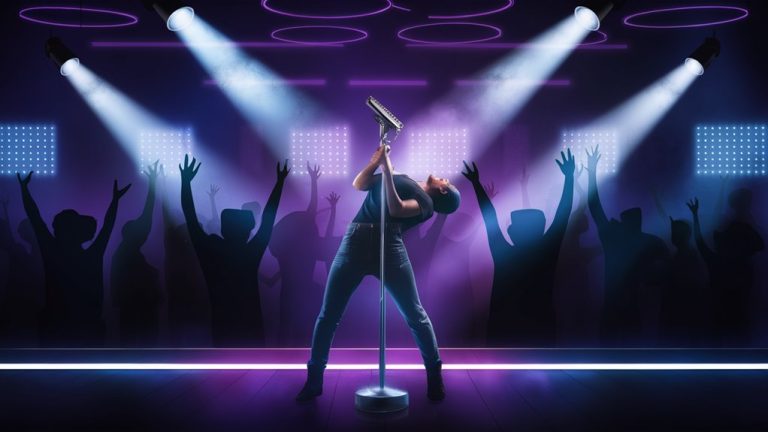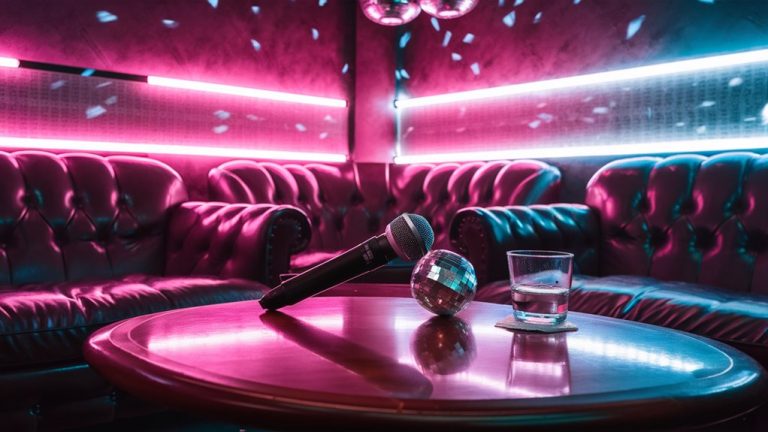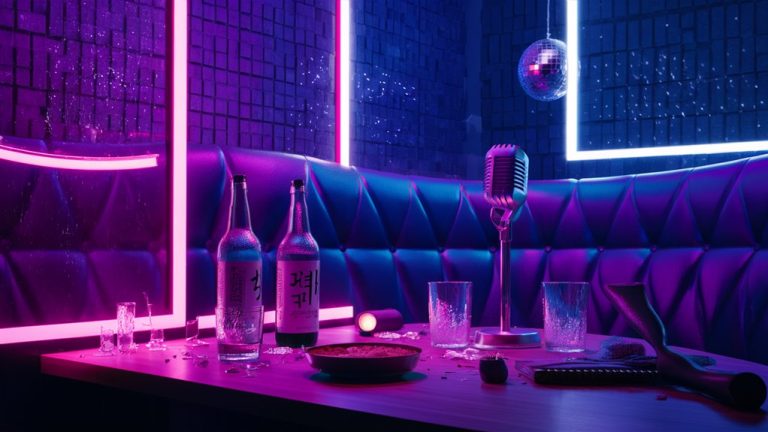Getting the Best Old-school Echo Room Sounds for High-Energy Music
Old Echo Room Methods for True Old-time Sound
Getting real old-time vibes starts with knowing the key parts of echo room form. The main way is to set flat bounce walls and put mics at 45 degrees to get the loved 2.3-second reverb we all want.
Basic Delay Settings for Big Impact
Strong sound making needs smart stack of delay times:
- Short delays (20-50ms) for big double sounds
- Long echoes (250ms+) for deep beats
- Delays that match the beat for music flow
Old Sound Parts
Use these old sound parts:
- Echoplex EP-3 copy for tape-like warmth
- Spring reverb style for real 1950s-60s sound
- Changed feedback for full deep feel
Next-level Sound Making
Smart use of delay setups and beat styles makes the deep sounds that set early rock and roll apart. Using many bounce points with right feedback loops gives that old ground-breaking feel while keeping it clear and strong now.
The Start and Growth of Echo Rooms
Old Roots in Sound Work
The term “echo room” came up in mid-20th century sound work, where rooms with flat, bounce walls made set reverb effects. These sound echo rooms were key for sound experts, letting them add depth and rich feel to music works. The sound styles became marks of classic records from the 1950s and 1960s.
Grow to Social Use
The idea of echo rooms got bigger than sound work into wider talk and media use. These spots mirror their sound past ones by making places where thoughts and beliefs go round and round, growing more strong each time. The core acts of growing ideas match well the first sound action, where sound moves bounce and get strong in closed spots.
Digital Age Effect
The start of digital tech and social media has made the echo room effect much stronger. Smart code that picks content makes smart loops that keep old views and beliefs strong. Unlike their music matches, these new social echo rooms may cut how much we see of other views, making small idea spots that hold back wide talk and chat.
Parts of New Echo Rooms
- Big Idea Grow: Strong hold on old beliefs
- Smart Picks: Just showing info that fits what you think
- Feedback Loops: Self-keeping rounds of same views
- Info Alone: Small look at other thoughts
The Change of Modern Echo Rooms: Mixing Old Sound Ways with New Digital Moves
Meeting of Old and New Tech
Echo room tech has changed a lot, showing a big mix of classic sound work and new digital ways. These new setups mix reverb spots with top digital changes, making smart half-and-half spots that help in daily use and creative tries.
Next-level Sound Work Chances
Modern echo room setups keep the main sound ideas while adding new digital parts like:
- Parametric equalization
- Changed delay setups
- Algorithm work
- Old plate reverb try-outs
- Big space codes
Half-and-half New Ideas in Sound Work
The mix of analog warmth and digital sharp lets us control sound features well. Main pluses include:
- Real-time change of time parts
- Right color control
- Big sound making
- Smooth sound spot moves
- Better bounce pattern work
Inside the Making Steps
Top Microphone Ways and Room Setup
Right mic places are key for top echo room recording. The best setup is to place the first mic at a 45-degree look while putting the catch mic near the far wall to get the best bounce patterns. The room sound keeps a natural reverb time of 2.3 seconds, made just right with smart set soft panels.
Old Gear and Signal Path
The signal way brings in a old Echoplex EP-3 tape delay into a special spring reverb thing. This mix gives a true ’60s quick-back sound, key for making classic old feel. The before-delay setting of 80ms gives clear first sounds before the echo starts.
Top Mix Ways and Space Design
Mix auto needs sharp control of extra send levels, needing smart changes while playing. The verse parts keep it clear by lowing effect levels, while chorus parts show more space effects for big hit. The use of side by side ways through three different echo rooms makes deep layers, with each room taking specific sound widths. This gives a big sound field that joins old ways with new mix tech.
From Making Room to Show: Top Live Echo Effects
Knowing Echo Room Use
Digital echo effects in live shows need sharp tech setup to get studio-like results. Pro sound people must know how to mix digital delay tools, reverb things, and smart monitor places to keep unwanted sound back. Room sound checks turn key when moving studio spots to live big spots.
Top Delay Setup Ways
Multi-tap delay tools let us make smart layered echo styles that go with the music beat. Going through set extra sends gives deep control over each delay line. The best mix of wet and dry sounds keeps the mix clear while keeping the wanted effect power. Beat-matched delays often use:
- Quarter note styles
- Dotted eighth setups
- Triplet-based echo gaps
Handling Live Echo Problems
Phase link control needs smart monitor places mixed with pick frequency work. Using set sound widths for echo use keeps low-end clear while making wanted sound parts better. Scene-based auto through MIDI plans lets smooth moves between song parts, with preset care made just for each part’s beat needs.
What Sets Their Sound Apart
Getting Echo Effects in Music Making
Main echo effects play a big role in how artists make their own sound styles through top signal ways. Echo rooms turn plain sound signs into deep, layered sound fields by using smart delay times and feedback rounds. These special ways to use echo become key parts of an artist’s known sound.
Analog vs Digital Echo Work
The change between old gear and new digital add-ons shows different sound feels. Analog echo tools naturally give a warm wow and flutter feel, while digital tools give sharp control over parts. The smart play of delay times, feedback part, and filter cut sets how big the effect is in the full mix.
Tech Parts and Sound Uses
Short delay times (20-50ms) make doubling effects that add to sound fullness, while longer delays (250ms+) build complex beat patterns that fit the track’s beat. Pro sound makers often use many delay lines with different change rates to make known sounds. These tech mixes let artists make everything from classic rockabilly quick-back to deep air-like feels, making known sound marks in their music.


